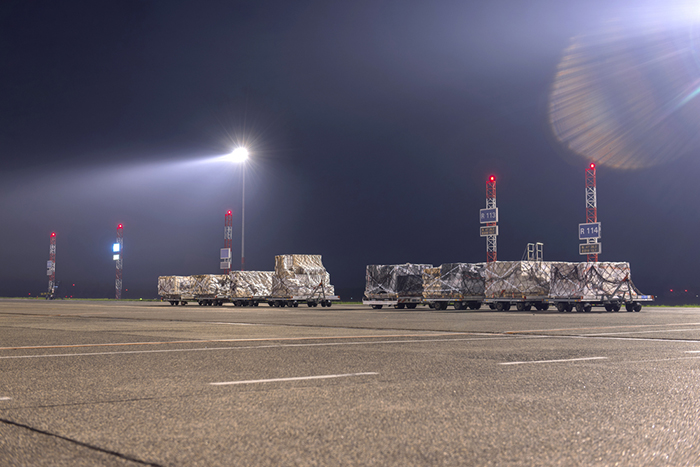Air cargo surge could continue through 2017
Bruce Barnard, Special Correspondent | Jan 10, 2017 3:29PM EST
 Europe led global air cargo demand growth in November.
Europe led global air cargo demand growth in November.
Global air freight traffic increased 6.8 percent in November from a year earlier, driven by strong growth in most regions, particularly Europe, and could continue rising through 2017, the International Air Transport Association said.
The increase was a slight slowdown from the 8.4 percent year-on-year growth in October — a 20-month high — but was still more than two-and-a-half times the average annual monthly growth rate of 2.6 percent over the past decade, according to the industry body.
Growth in capacity, measured in available freight tonne kilometres, increased 4.4 percent in November, up from a 3.3 percent rise in the previous month.
The uptick in growth coincides with an increase in the shipment of silicon materials used in high-value consumer electronics products shipped by air and an “apparent” turnaround in new export orders, IATA said.
The modal shift to air cargo following the collapse of South Korean container line Hanjin Shipping in August may have also contributed to the increased demand for air cargo.
“Air cargo enjoyed a strong peak season in November. And there are encouraging signs that this growth will continue into 2017, particularly with the shipment of high-value consumer electronics and their component parts,” said Alexandre de Juniac, IATA’s Director General and CEO.
“But the trend in world trade is still stagnant. So it remains critically important for the air cargo industry to continue to improve its value offering by implementing modern customer-centric processes.”
Asia-Pacific airlines, which account for around 38 percent of the global market, boosted volume by 6.1 percent in November and grew capacity by 4 percent. “Seasonally adjusted volumes are now back to the levels reached in 2010 during the post-global financial crisis bounce back,” IATA said. “The increase in demand is captured in the positive outlook from business surveys in the region.”
North American carriers’ volume was up 5.6 percent, more than double the 2.6 percent rise in capacity. Traffic across the Atlantic continues to increase, with westbound shipments helped by the strong dollar, which is also squeezing US exports.
European traffic jumped 9 percent in November, down from 13.3 percent in October, most probably due to a strike at German carrier Lufthansa, the region’s leading cargo airline.
“Notwithstanding this, the seasonally adjusted growth trend is strong and corresponds with the sustained increase in export orders in Germany over the last few months and the ongoing weakness in the euro.”
Middle East carriers boosted volume by 7.8 percent from a year ago and African traffic was 10.9 percent higher largely due to the expansion of long haul passenger flights by Ethiopian Airlines.
Latin America continues to languish, with traffic contracting 1.3 percent due to the weakening Brazilian economy, but in seasonally adjusted terms regional growth levels are in line with where they were at the beginning of 2016.
No comments:
Post a Comment